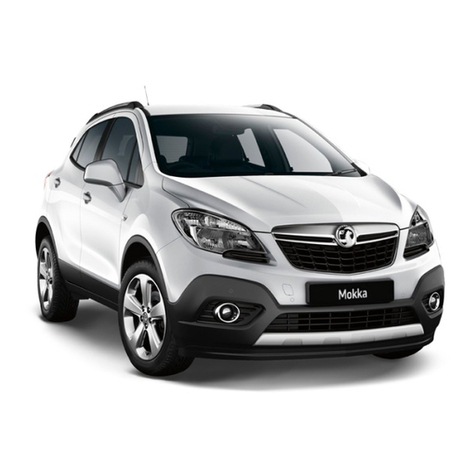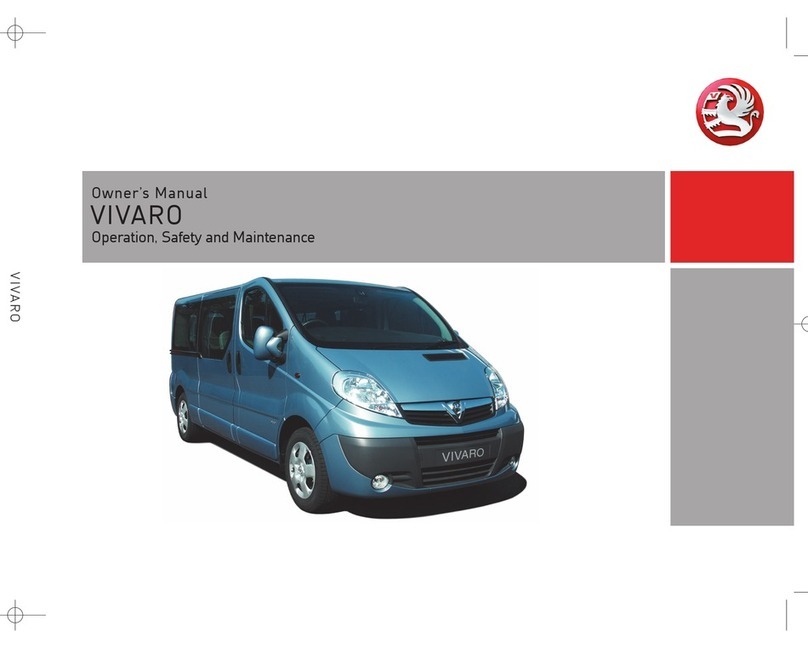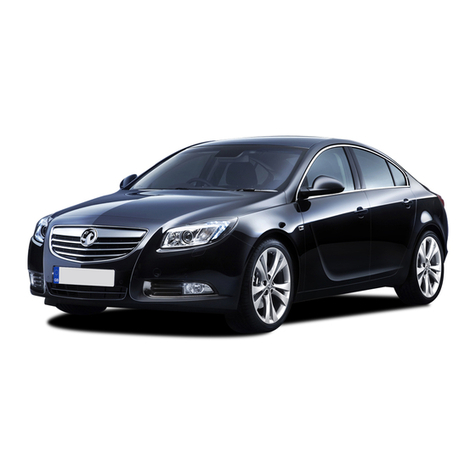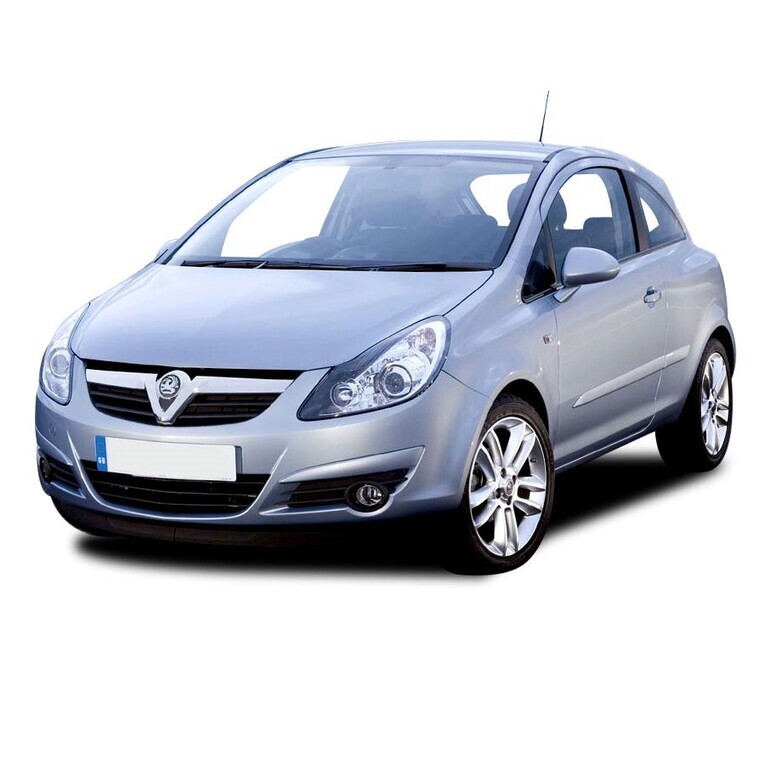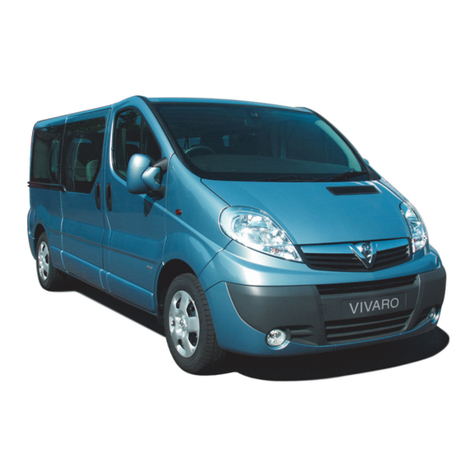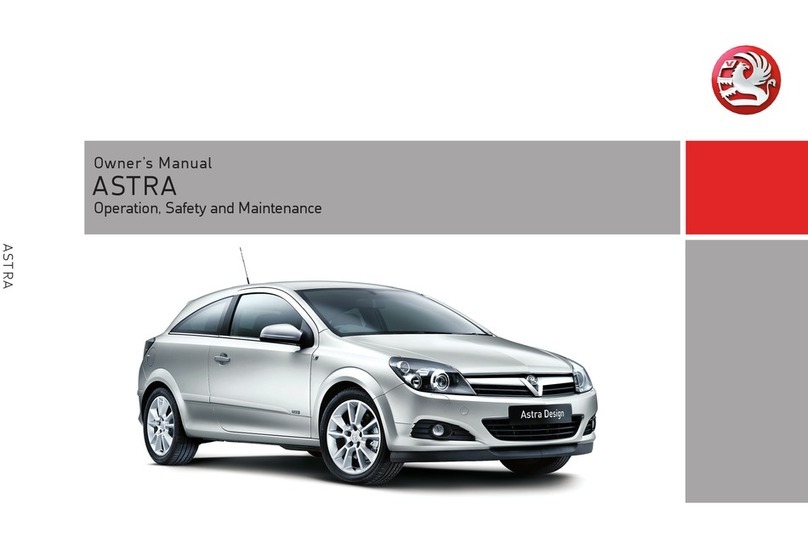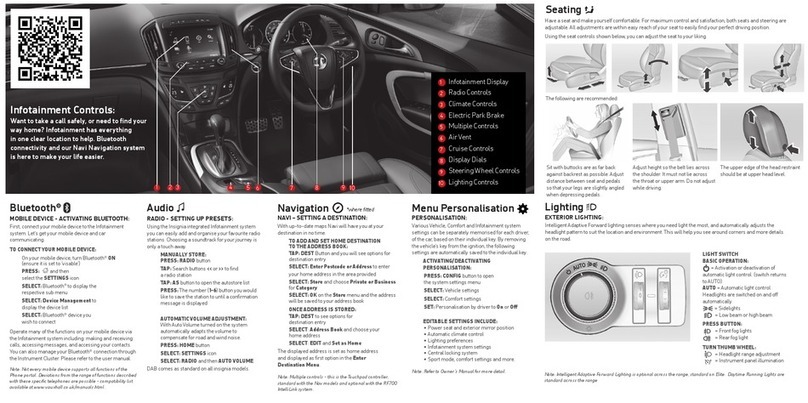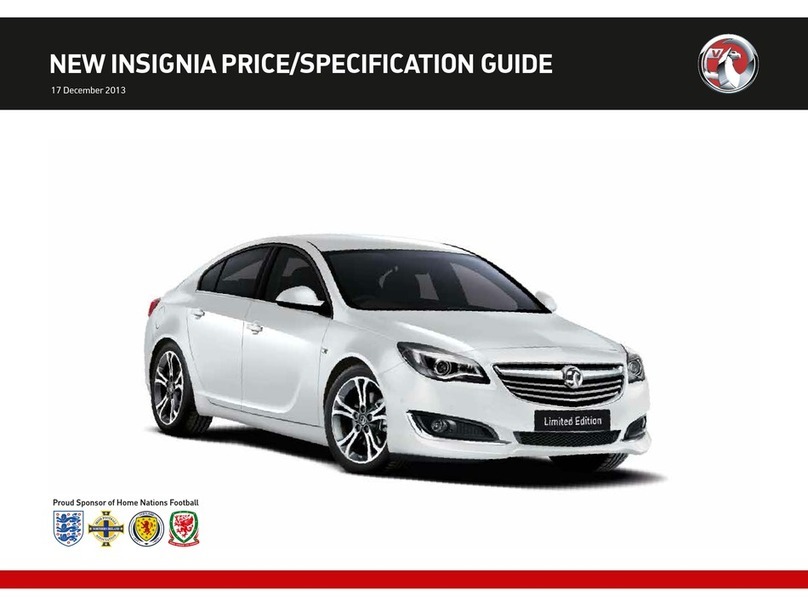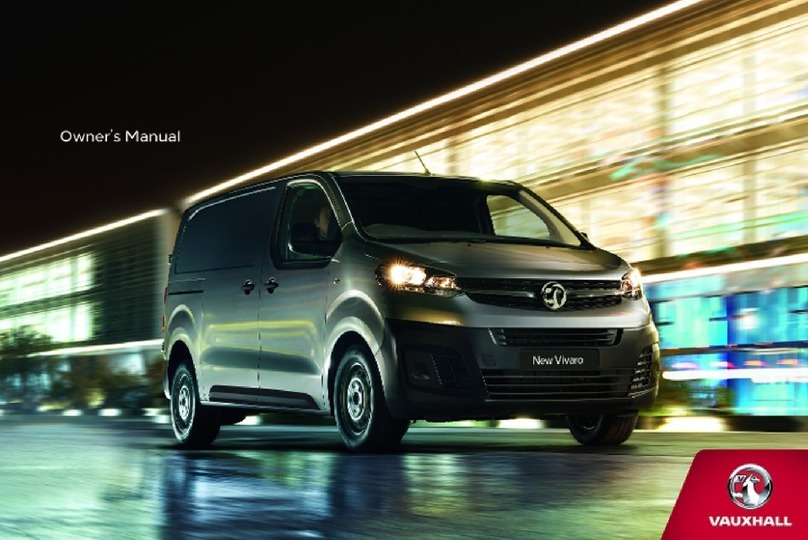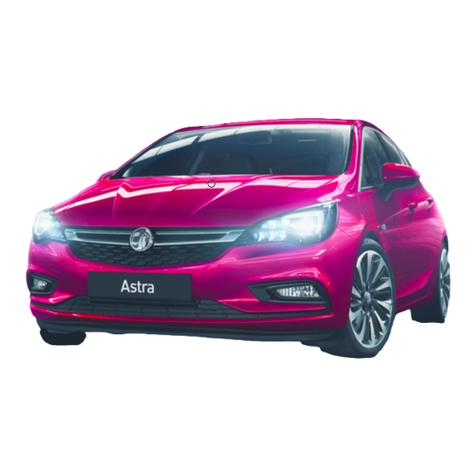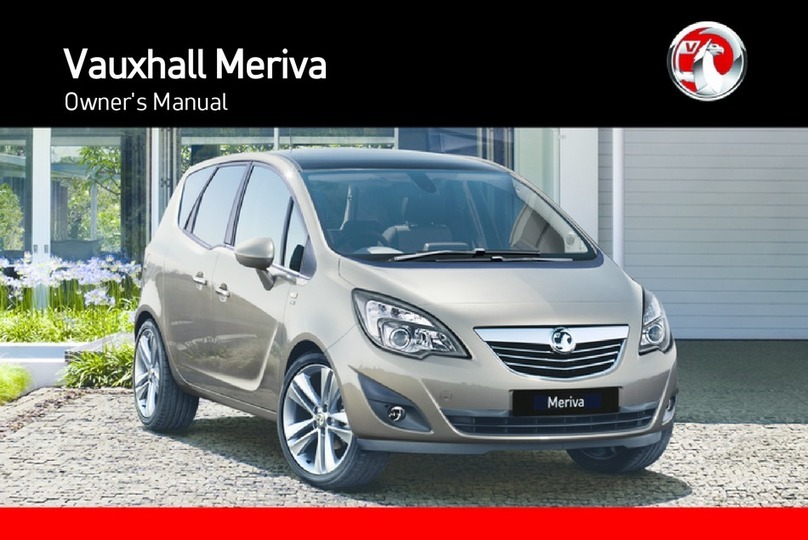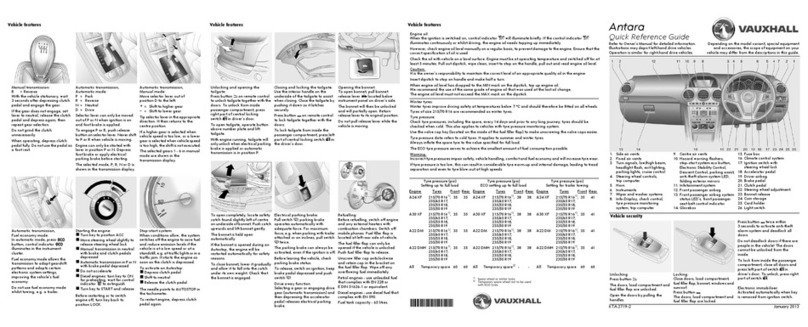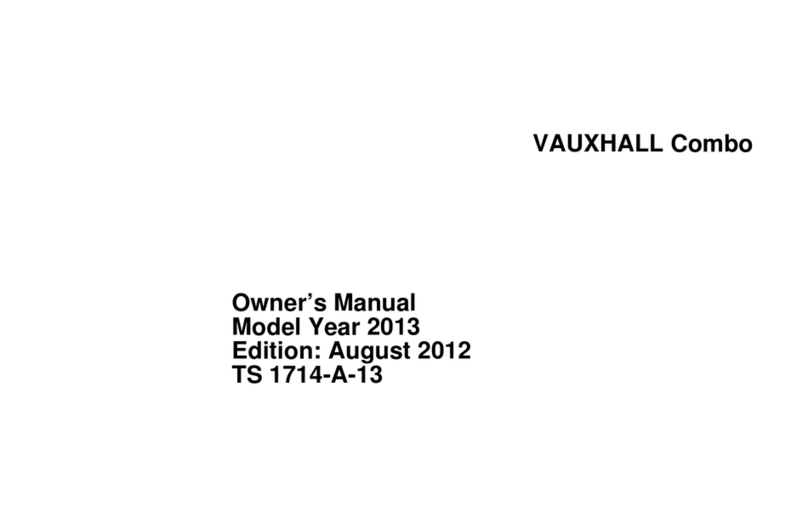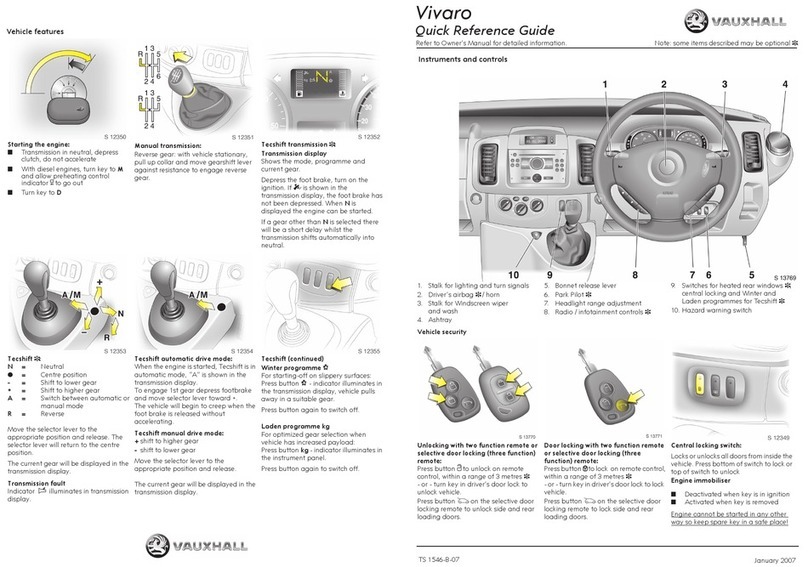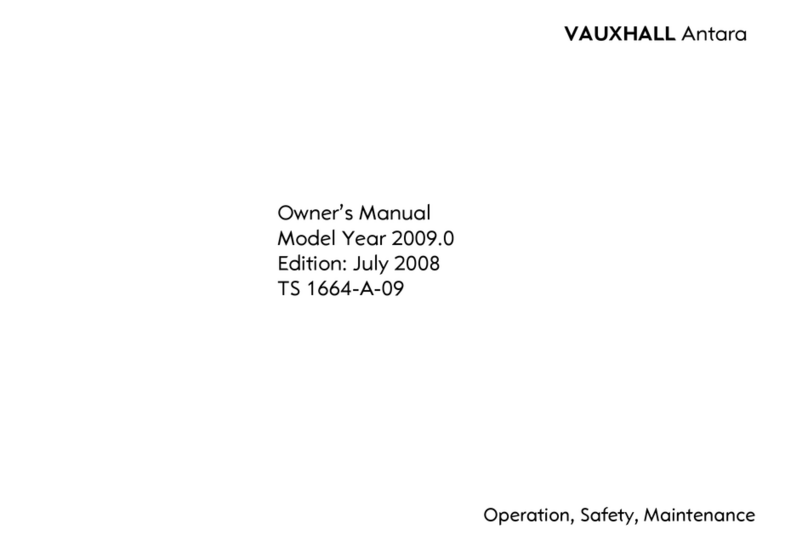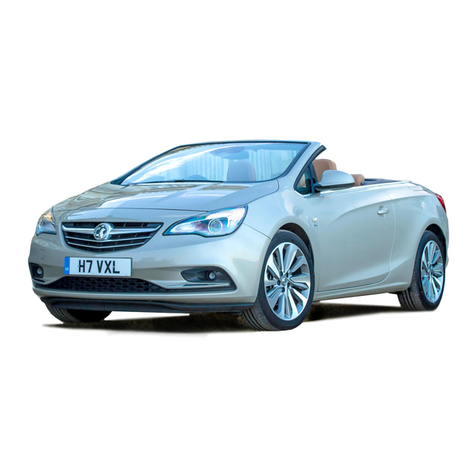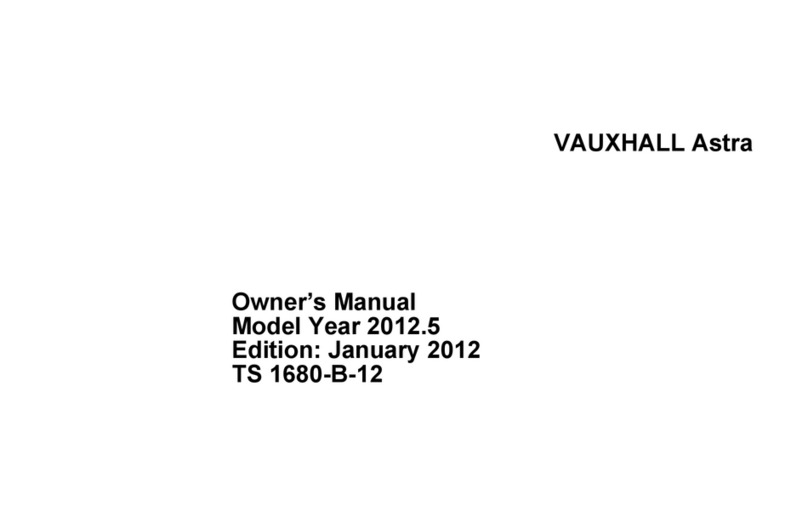Vehicle features Vehicle featuresVehicle features Vehicle features
Longitudinal seat adjustment:
Pull handle, slide seat, release
handle.
Danger:
Do not sit nearer than 25 cm from
steering wheel, to permit safe
airbag deployment.
Seat backrests:
Turn handwheel.
Do not lean on backrest when
adjusting.
Do not angle the backrest too far
back. We recommend a maximum
rake of approx. 25o.
Seat height:
Lever pumping motion.
up = seat higher
down = seat lower
Operate lever and adjust body
weight on seat to raise or lower
seat.
Seat position:
Sit with buttocks are as far back
against backrest as possible.
Adjust distance between seat and
pedals so that your legs are slightly
angled when depressing pedals.
Slide the front passenger seat as
far back as possible.
Head restraint adjustment:
Press the release button, adjust
height and engage.
The upper edge of the head
restraint should be at upper head
level.
Steering wheel adjustment:
Unlock the lever, adjust the
steering wheel, then engage lever
and ensure it is fully locked.
Do not adjust the steering wheel
unless the vehicle is stationary and
the steering wheel lock has been
released.
Seat belt height adjustment:
1. Pull belt out slightly
2. Press button down
3. Adjust height and engage
Adjust height so the belt lies across
the shoulder. It must not lie across
the throat or upper arm. Do not
adjust while driving.
Fitting seat belts:
Withdraw seat belt from retractor,
guide it untwisted across the body
and insert latch plate in belt buckle.
Tighten the lap belt regularly whilst
driving by pulling the shoulder belt.
Loose or bulky clothing prevents
the belt from fitting snugly. Do not
place objects such as handbags or
mobile phones between the belt
and your body.
Warning:
The best must not rest against hard
or fragile objects in the pockets of
your clothing.
To release belt, press red button on
belt buckle.
Fasten seat belt before each trip.
In the event of an accident, people
not wearing seat belts endanger
their fellow vehicle occupants and
themselves.
Manual interior mirror:
Swivel mirror housing.
To reduce dazzle, adjust the lever
on the underside of the mirror
housing.
Manual exterior mirrors:
Adjust mirrors by swivelling lever in
required direction.
The lower mirrors are not
adjustable.
Adjusting electric exterior mirrors:
Select the relevant exterior mirror
by turning the control to left (_)
or right (6).
Swivel the control to adjust the
mirror.
In position o, no mirror is selected.
Operating windows from outside:
The windows can be operated from
outside the vehicle when locking or
unlocking the vehicle.
Press and hold the Äbutton to
open windows.
Press and hold the ebutton to
close windows.
Release button to stop window
movement.
Folding exterior mirrors:
For pedestrian safety, exterior
mirrors will swing out of their
normal mounting position if they
are struck with sufficient force.
Reposition the mirror before driving
by applying slight pressure to the
mirror housing.
Power windows:
With the ignition on, power
windows are operated via the
switches in the door.
Push switch = Open window
Pull switch = Close window
Push or pull switch gently to the first
detent position: Window moves up
or down as long as the switch is
operated.
Push or pull switch to the second
detent position and then release:
Window opens or closes
automatically. To stop window
movement, operate the switch
again in the same direction.
If the window glass encounters
resistance above the middle of the
window during automatic closing,
it is immediately stopped and
opened again.
With the ignition key removed or in
the STOP position, the windows can
be operated for approx. 2 minutes
and are deactivated as soon as a
door is opened.
Light switch:
Turn light switch:
§= Off /
Daytime running lights
9= Headlights / sidelights
Tail lights:
Tail lights are illuminated together
with the headlights and sidelights.
Reversing lights:
The reversing lights come on when
the ignition is switched on and
reverse gear is selected.
Front fog lights:
Operated with the >button.
Switching on front fog lights will
switch sidelights on automatically.
Rear fog light:
Operated with the rbutton.
The rear fog light can only be
switched on when both the ignition
and headlights or sidelights (with
front fog lights) are on.
Press the button again to turn the
rear fog light off, or turn off the
headlights and/or the front fog
lights.
Daytime running lights:
Increases visibility of the vehicle
during daylight.
When the function is activated and
the ignition is switched on, the
headlights come on automatically
and instrument illumination is
subdued.
The light switch must be in
position §.
The daytime running lights switch
off when the ignition is switched off.
Note:
The driver remains responsible for
switching on the headlights when
required, e.g. when driving through
a tunnel or at night.
When the function is deactivated,
the headlights do not come on
automatically when the ignition is
switched on and the light switch is
in position §.
The daytime running lights function
can be activated and deactivated
via a menu in the Driver
Information Centre (DIC).
Headlight range adjustment:
Adapt headlight range to suit the
vehicle load to prevent dazzling of
other road users.
Press button Àor Áuntil the
required setting is displayed in the
Driver Information Centre (DIC).
Front seats occupied = 0
All seats occupied = 1
All seats occupied and
load compartment laden = 2
Driver’s seat occupied and
load compartment laden = 3
Turn and lane-change signals:
Lever up = Right turn signal
Lever down = Left turn signal
If the lever is moved past the
resistance point, the turn signal is
switched on constantly. When the
steering wheel is moved back, the
turn signal is automatically
deactivated.
For five flashes, e.g. when
changing lanes, press the lever until
resistance is felt and then release.
Switch the indicator off manually
by moving the lever to its original
position.
Operating headlight flash, high
beam and low beam:
Headlight flash = Pull lever
towards
steering wheel
High beam = Push lever
forwards
Low beam = Pull lever
towards
steering wheel
Windscreen wiper:
É= Fast
È= Slow
Ç= Intermittent wiping
§= Off
For a single wipe when the
windscreen wiper is off, move the
lever up.
Do not use wiper if the windscreen
is frozen.
Switch wiper off in car washes.
Adjustable wiper interval:
With wiper lever in position Ç,
the windscreen wiper will
automatically adapt to the speed
of the vehicle.
Windscreen washer:
Pull lever towards steering wheel.
Washer fluid is sprayed onto the
windscreen and the wiper swipes
for a few strokes.
Pull lever and hold; Washer fluid is
sprayed onto the windscreen and
the wiper swipes until the lever is
released.
Rear window wiper/washer:
Twist to activate the rear window
wiper.
§= Rear wiper off
e= Rear wiper on
Push lever to activate rear window
washer. Washer fluid is sprayed
onto the rear window and the wiper
swipes for a few strokes.
The rear window wiper comes on
automatically when the windscreen
wiper is switched on and reverse
gear is engaged.
Do not use wiper if the rear window
is frozen.
Switch wiper off in car washes.
Hazard warning flashers:
Operated with the ¨button.
In the event of an accident where
the airbags are deployed the
hazard warning flashers are
activated automatically.
Heated rear window,
heated exterior mirrors Ü:
The heating is operated by
pressing the Übutton.
Heating works with the engine
running and switches off
automatically after a short time.
Demisting and defrosting
windows V:
Set the temperature control to
the highest level.
Set fan speed to highest level.
Set air distribution control to V.
Switch cooling non.
Switch heated rear window Ü
on.
Open side air vents and direct
them towards the door windows.
For simultaneous warmingof the
foot well, set air distribution
control to J.
